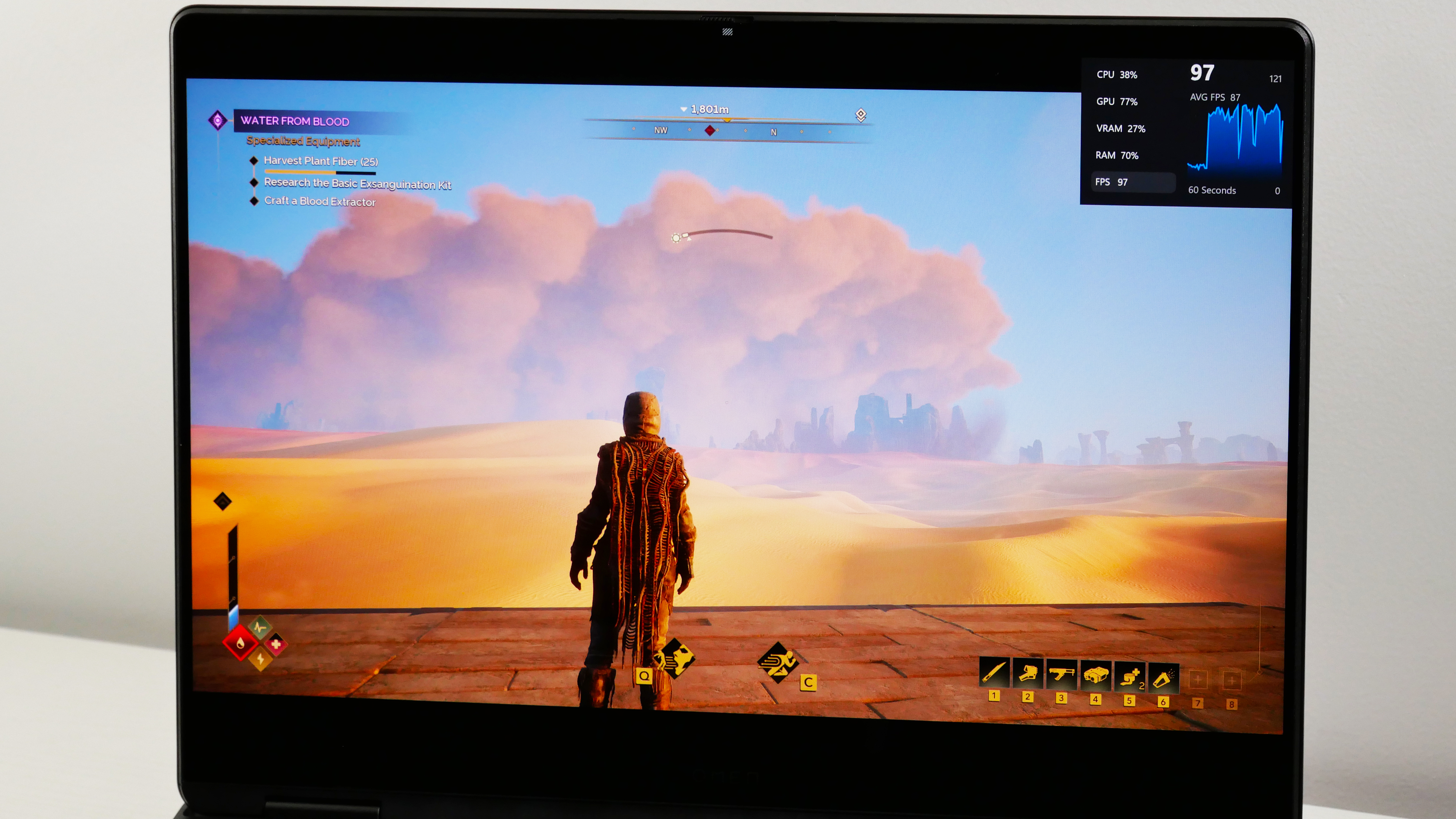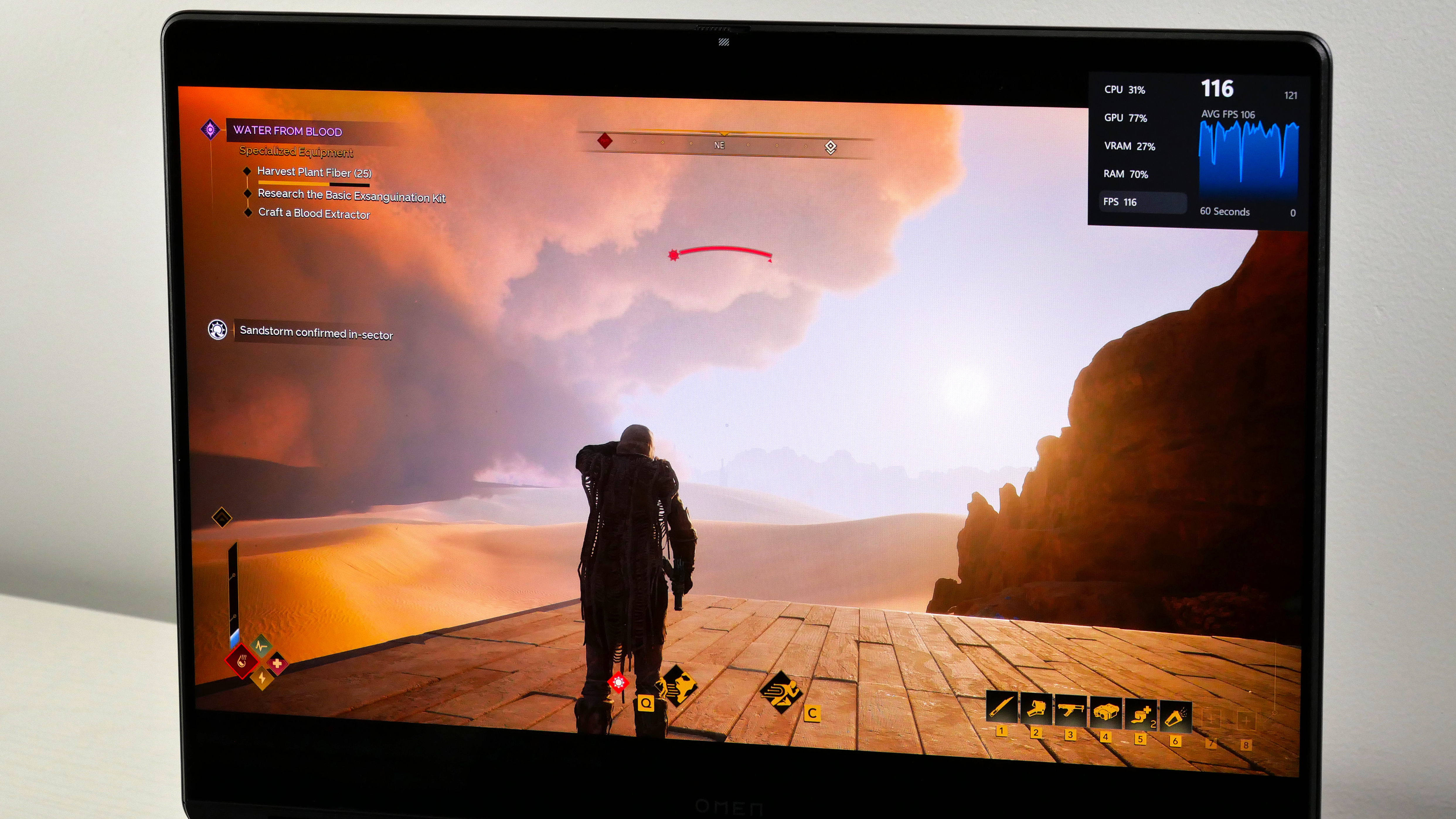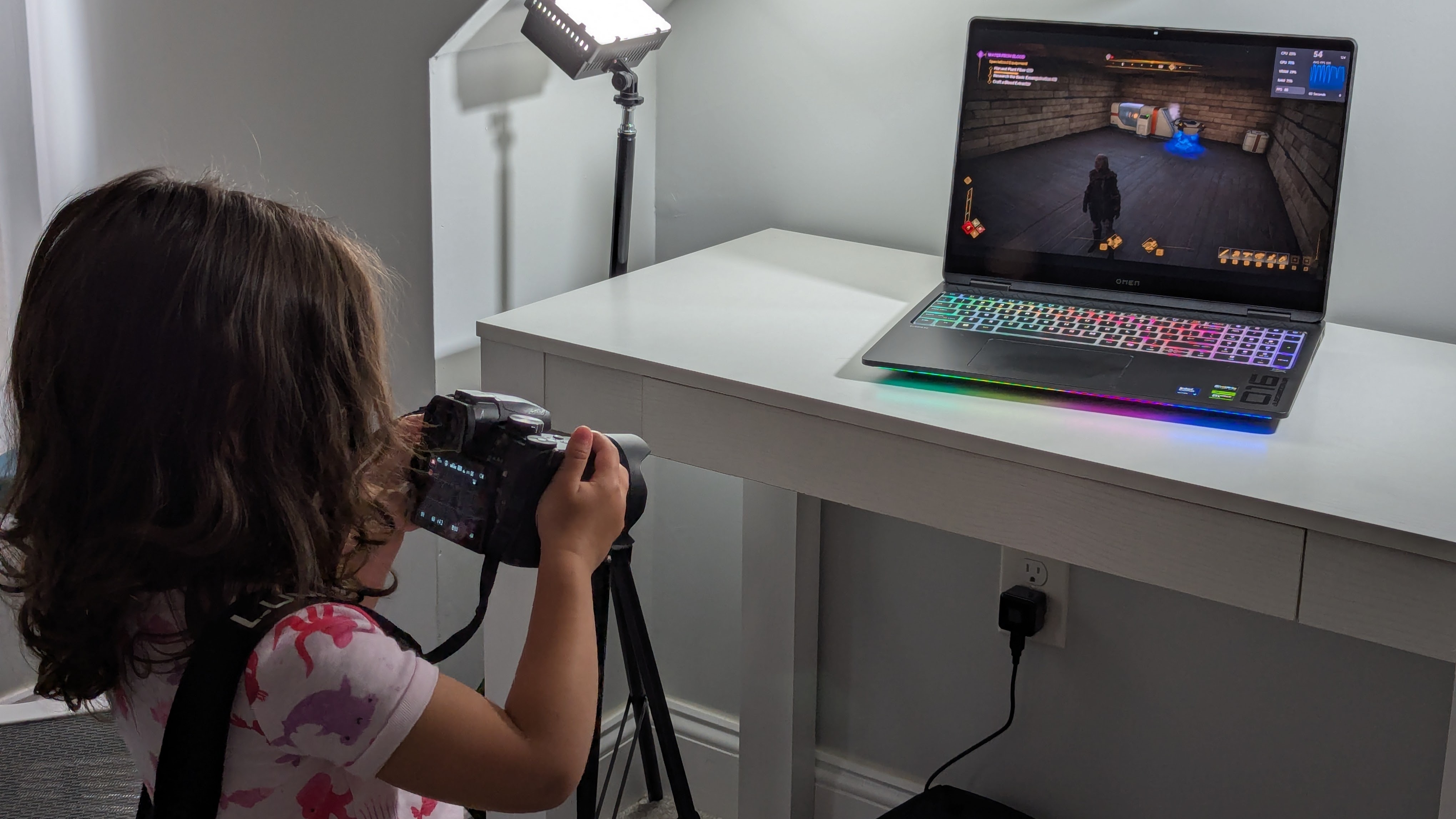
Hold my spice, I’m jumping into Dune: Awakening to see if Nvidia’s wild DLSS 4 claims are true, and what better device to test it on than an RTX 5090 gaming laptop?
If you ever wanted an MMO survival base-building game set on Arrakis, that’s exactly what you’re getting. While we did get Dune: Spice Wars in 2022, Dune: Awakening is a more definitive debut for the Dune franchise simply because its genre is more popular.
I played Dune: Awakening on an HP Omen Max 16 outfitted with an Intel Core Ultra 9 275HX processor, an Nvidia GeForce RTX 5090 24GB GPU, 32GB of RAM, and a 16-inch, 2560 x 1600, 240Hz, OLED display.
Here’s how it ran.
Surviving and thriving


I spent more time with the character creator than I care to admit, but I quickly sped through the tutorial so I could get to the online portion of the game. I drank some water, crafted a knife, and made some bandages. You know, the usual. Then I got into some knife fights where I learned how to dodge and parry, which I had no idea was a thing in this game, but now I am invested in the combat system.
Fair warning, controller players — Dune: Awakening is not friendly to us. Everything from the radial wheel to the menus themselves feels like they are designed for a keyboard and mouse. Pulling up a wheel to select your quick items takes so much longer and breaks the flow of combat compared with a simple numbered button click. And the menu replicates a mouse experience except with the analog stick, and that… is slow. I hope the controller experience on console is better because the PC experience had my patience evaporating like it was left out in the desert.
As far as the graphics go, I crash landed into the player-infested desert with everything cranked up to Ultra (apart from the experimental features) at a 2560 x 1600 resolution, which applies to all of the following tests below. If you remember, Dune: Awakening was among Nvidia’s featured DLSS 4 titles when the RTX 50-series launched, with promises of wildly high frame rates.
For those unaware, DLSS 4 is a super sampling technology that boosts visuals and performance. I have a love/hate relationship with it after my experiences in Doom: The Dark Ages and Monster Hunter Wilds, and that’s because of Multi-Frame Generation. It’s a technology that replicates frames with AI based on the true frames rendered on your GPU. This isn’t a perfect technology, and I’ll go into why later. But first, I turned off all of that.

Starting raw, with no DLSS, I set the upscaler to TAA. At max settings, this got me an average of 60 frames per second while I shot my way through a bandit camp just to pilfer some scrap. That’s a pretty strong opening. If you don’t want to touch Nvidia’s dark magic, you’ll be perfectly fine with an RTX 5090.
However, I enjoy playing with the DLSS 4 upscaler set to DLAA, as it uses the native resolution and enhances the visuals. It can be a little more taxing, but when I started mining for copper ore, the RTX 5090 managed a solid 63 fps. Again, that’s pretty solid. This got my hopes pretty high for frame generation. Maybe I’d get the wild numbers that Nvidia claimed. And I did… but there was a catch.
So whether I was avoiding the sandworm, sand storm, or trying my best to build a base that didn’t look like a cookie cutter stone box, the frame generation had some trouble. But first, let’s talk about performance.
With DLAA, I first turned on 2x Frame Generation (FG) and then 4x Multi-Frame Generation (MFG). With FG, the RTX 5090 jumped to 88 fps while I tried my best to parry and stab an annoying bandit near my base. That’s not as high of a jump as I expected. But when I flipped the switch to MFG, I got a whopping 144 fps.
If you’re just interested in high performance play, then you’ll want to set DLSS to Ultra Performance. With no frame generation, I got 144 fps when I used my freaky Bene Gesserit compel ability on a nearby enemy. When I started dissecting a broken Ornithopter, the RTX 5090 managed 156 fps on FG. And then, when I had to outrun the sun itself because my skin was practically on fire, I got up to a wild 257 fps.
Awesome, right? Wrong. You see, I noticed straight from the tutorial that Multi-Frame Generation was an issue. As I said, DLSS 4 isn’t magic. The generated frames you’re getting aren’t perfect, so you may see some artifacts, like a pixelated asset, just for a moment. Some games hide this well, but Dune: Awakening is not one of them. Just from moving the camera around, I noticed the foliage around me become distorted. Even the ground looked like it had a hard time keeping up, with little blotches in the sand appearing.
Unfortunately, this isn't the magical performance we saw in those RTX 50-series trailers. If you absolutely need the frame generation because you’re on a lower spec 50-series rig, do it. But I’d avoid it for now, at least until either Nvidia or Dune: Awakening gives us an update.
But overall, if you’re interested in getting one of the best gaming laptops, you can expect some spicy performance without all the DLSS 4 magic.
Settings |
Frames per second |
|---|---|
TAA |
60 fps |
DLSS: DLAA |
63 fps |
DLSS: DLAA, FG (2x) |
88 fps |
DLSS: DLAA, MFG (4x) |
144 fps |
DLSS: Ultra Performance |
114 fps |
DLSS: Ultra Performance, FG (2x) |
156 fps |
DLSS: Ultra Performance, MFG (4x) |
257 fps |







